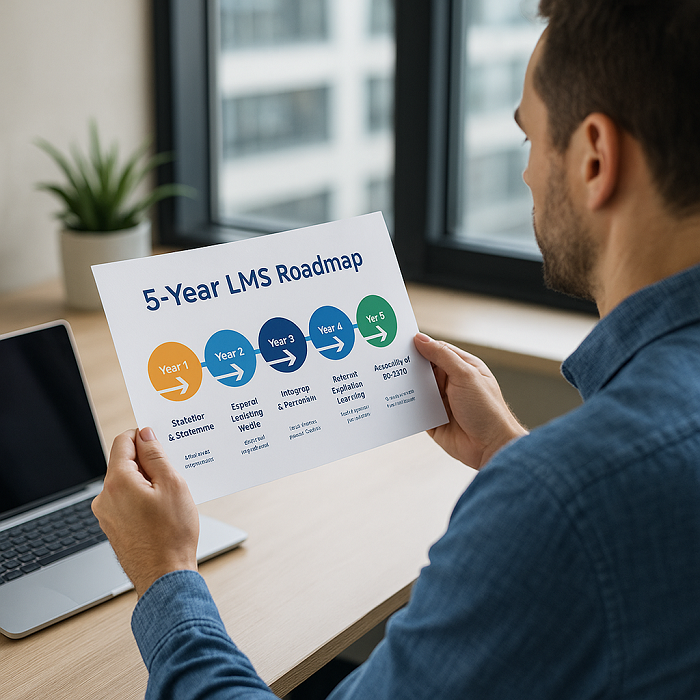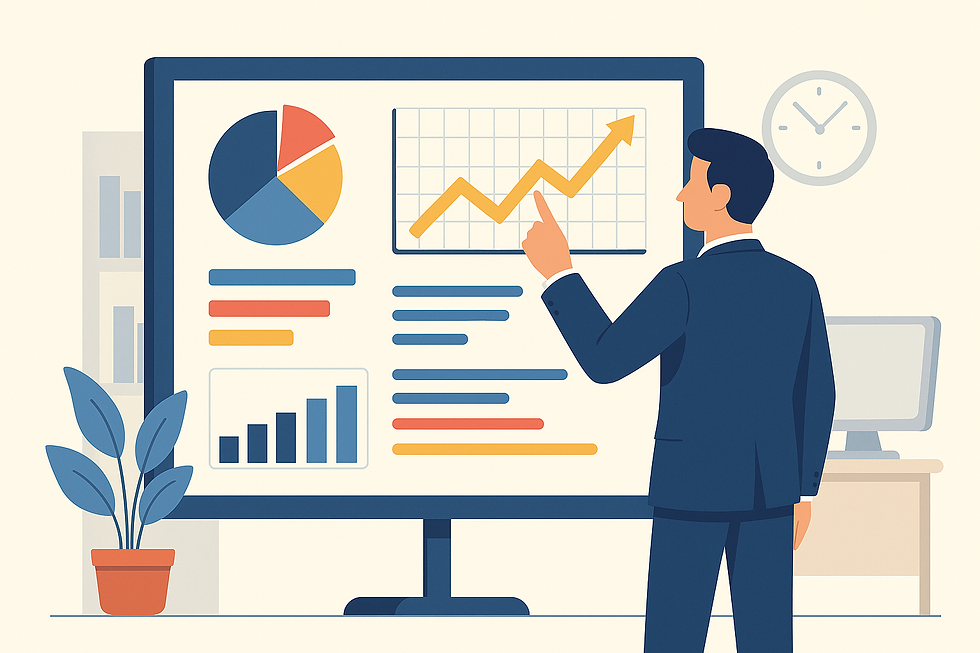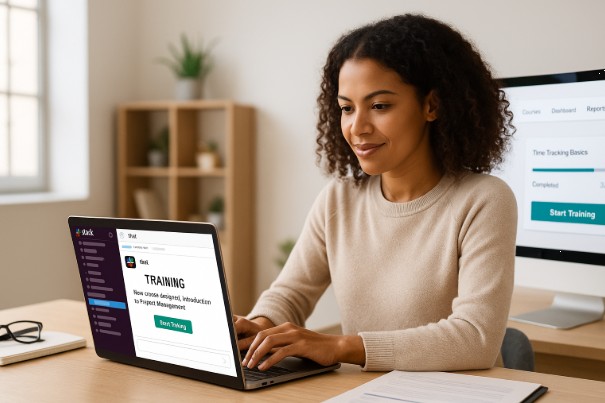The 5-Year LMS Roadmap: Preparing for 2030 Today
- Alisa Herman
- 35 minutes ago
- 4 min read

The workplace is changing—fast. From hybrid teams and AI-driven tools to shifting employee expectations, the way we train and develop talent must evolve. If your Learning Management System (LMS) is stuck in 2023, it won’t serve your workforce in 2030.
That’s why it’s time to future-proof your training infrastructure by mapping out a 5-year LMS roadmap—one that aligns with business growth, tech innovation, and learner needs.
In this blog post, we’ll explore how to structure your LMS strategy for long-term success, what trends you need to prepare for, and how platforms like SkyPrep can support that evolution.
Why You Need a 5-Year LMS Roadmap
Most companies choose an LMS to meet immediate training needs—onboarding, compliance, skills development. But what happens when your workforce doubles, your roles shift, or your tech stack changes?
Without a roadmap, you risk:
Outgrowing your LMS before you're ready
Underutilizing its features
Lacking integrations that future systems require
Falling behind in learner engagement
A strategic roadmap turns your LMS into a scalable, adaptable training engine—not just a course library.
Phase 1: Stabilize and Streamline (Year 1)
The first year is about building a strong foundation. Focus on:
1. Standardizing Content
Clean up legacy courses, remove duplicates, and migrate everything to your LMS. Use templates for consistency.
2. Segmenting Your Audiences
Group learners by department, role, geography, or seniority. This allows for targeted learning paths later.
3. Automating Core Training
Use automation to deliver recurring training like:
Compliance refreshers
Onboarding sequences
Annual certifications
SkyPrep offers intuitive automation tools that streamline this setup.
Phase 2: Expand Learning Modes (Year 2)
Once core systems are stable, begin diversifying how training is delivered.
Add Microlearning
Break down long courses into 5-10 minute modules. Perfect for mobile learners and frontline workers.
Blend Formats
Mix live webinars, self-paced content, simulations, and social learning to meet varied preferences.
Track Engagement
Use analytics dashboards to see what’s working. Monitor:
Completion rates
Time spent
Quiz scores
Drop-off points
Your LMS should help you evolve based on learner behavior.
Phase 3: Integrate and Personalize (Year 3)
By year three, your LMS should become interconnected and intelligent.
Connect to HR and CRM Systems
Integrate with tools like:
HRIS (BambooHR, Workday)
CRM (Salesforce)
Collaboration tools (Slack, Teams)
SkyPrep’s API and integration support enable seamless cross-platform training management.
Enable Personalized Learning Paths
Use role-based assignments, learning goals, and performance data to build:
Upskilling tracks
Leadership development journeys
Skill gap closure programs
The more tailored the learning, the greater the impact.
Phase 4: Embrace Predictive Learning (Year 4)
This is where AI and analytics play a bigger role in training decisions.
Predict Training Needs
Use past performance to suggest future courses. For example:
Reassign training where employees struggle
Recommend new certifications based on job changes
Spot high-potential talent through learning behavior
Focus on Skills, Not Just Courses
Move away from course-centric models and toward skills matrices. Build paths around competencies, not job titles.
SkyPrep’s reporting tools support this kind of strategic planning.
Phase 5: Future-Proof for 2030 (Year 5)
By now, your LMS should be a strategic asset—not just a tool.
Support for AI Literacy
In 2030, every employee will likely interact with AI in some form. Training should prepare them for:
Using AI ethically
Prompt engineering
Critical thinking with AI insights
Compliance-First Design
With global laws changing fast, your LMS must:
Update content in real time
Prove training completion with audit logs
Support regional compliance (GDPR, HIPAA, etc.)
Mobile-First, Offline-Ready
Your future learners will expect:
On-demand mobile access
Offline capabilities for field teams
Gamified, app-like UX
SkyPrep’s mobile-friendly design helps ensure future accessibility.
Red Flags That It’s Time to Rethink Your LMS
You manually track training completions in spreadsheets
Your LMS doesn’t integrate with your other HR tools
Learners complain about poor UX or irrelevant content
Compliance training isn’t being completed on time
It’s hard to assign training by skill or role
You can’t generate reports quickly for audits
If you’re facing any of these, it’s time to rethink your LMS roadmap—before your systems, learners, or risks evolve beyond your capabilities.
Why SkyPrep Supports Long-Term LMS Success
SkyPrep was built with long-term scalability in mind. It offers:
Modular content delivery
User segmentation and automation
Deep analytics and customizable reports
Open API for integration
Mobile-first and offline access
AI-readiness and data security compliance
As your business grows and training evolves, SkyPrep grows with you.
Whether you're focused on compliance today or predictive analytics tomorrow, this platform ensures your LMS isn’t just relevant—it’s transformative.
Final Thought: Don’t Just Think Year to Year—Think Future-First
Most companies look at training as a cost. Forward-thinking companies see it as a long-term investment.
Your LMS shouldn’t be a tool you replace every few years. It should be a system you grow into—with a clear roadmap to guide the way.
2030 may feel far off, but the decisions you make now will define how ready your workforce is when it arrives.
Let SkyPrep help you build a smarter, more scalable LMS strategy—starting today.






Comments